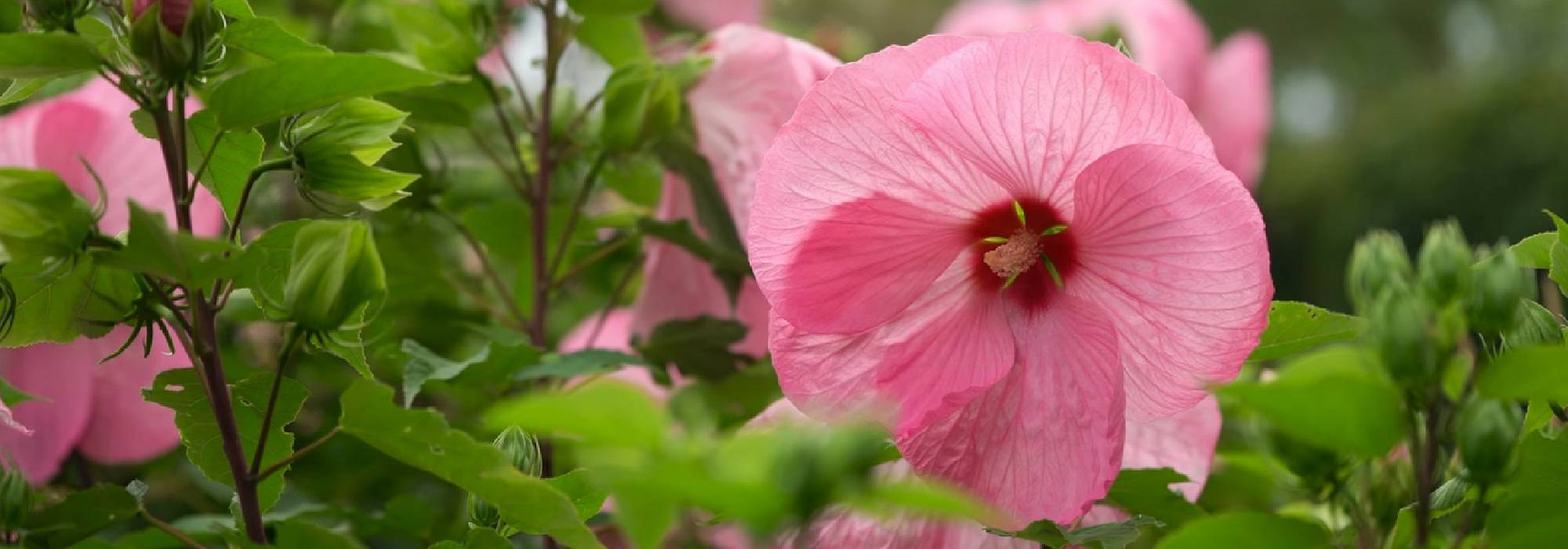
Hibiscus, Althaea: planting, growing and care
Contents
Hibiscus in a nutshell
- Hibiscus is a bush that offers a generous exotic flowering in summer.
- Ideal as a standalone specimen, it also allows for the creation of lovely flowering hedges.
- The spectacular flowers of the marsh hibiscus make a statement in water gardens.
- Hibiscus syriacus withstands winter frost perfectly.
- Very floriferous and easy to cultivate, it is the perfect bush to add colour throughout the late season.
A word from our expert
Hibiscus is a beautiful bush with an exotic appearance that captivates with its magnificent flowering in corollas. Ephemeral, its stunning flowers only last a day, but they continuously renew themselves, providing a perpetual display from July to October.
The numerous species and varieties of hardy hibiscus offer an extraordinary palette of colours, ranging from pure white to purple, including pink and bright red. The delicate petals generally surround a colourful heart, giving them a very tropical style that rivals their cousin from the islands, Hibiscus rosa-sinensis.
Hardy down to -15°C, hardy hibiscus or altheas (H. syriacus and H. paramutabilis) easily settle in all our regions, provided their roots are kept cool. They look wonderful as a solitary specimen in the middle of a short grass meadow, but can also be integrated into a flowering hedge or a summer border.
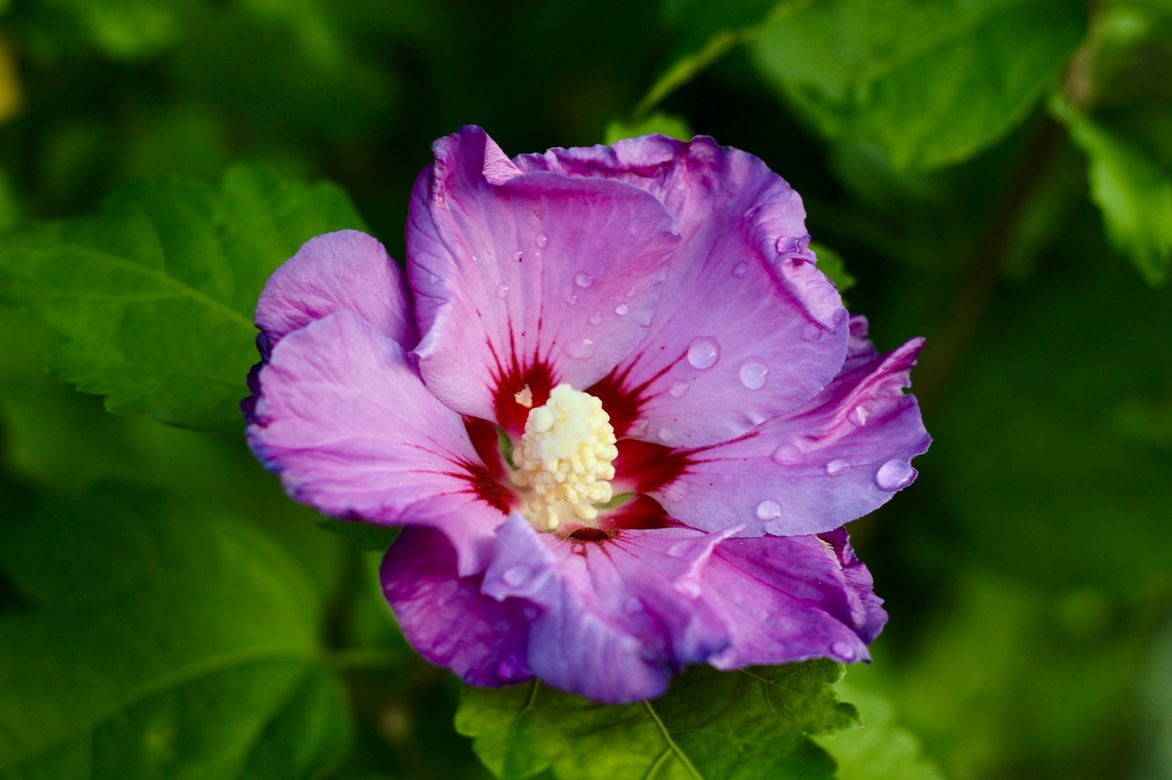
Stunning flower of Hibiscus syriacus.
A little less hardy (down to -10°C), marsh hibiscus (H. moscheutos and H. coccineus) prefer moist, even waterlogged soils. Their lushness will be perfectly highlighted at the edge of a pond, but also in a pot kept well-watered, bringing a touch of the islands to a terrace or balcony.
All hibiscus indeed grow very well in pots, a cultivation method that offers the advantage of being able to winter them out of frost in regions with particularly cold winters.
Easy to care for, hardy hibiscus require little maintenance. In sufficiently cool or moist soil, depending on the species, they develop harmoniously until October. Pruning is recommended during the dormant phase but remains optional. The hibiscus then reappears in spring, sometimes a bit lazily, to offer a profusion of delicate and colourful flowers from July, creating an exotic decor that leaves no one indifferent!
Description and Botany
Botanical data
- Latin name Hibiscus
- Family Malvaceae
- Common name Hibiscus, Althaea
- Flowering July to October
- Height 1.50 to 3 m
- Exposure Sun, partial shade
- Soil type Rich, cool to moist
- Hardiness -10 to -15°C
Hibiscus is part of the Malvaceae family, like hollyhocks and mallows, hence its nickname “tree mallow“. It can be easily trained on a stem and can then become a striking exotic feature in the middle of a lawn, but is also ideal for creating a medium-sized hedge alongside other flowering bushes.
While this genus includes many species suited for cultivation in open ground in our latitudes, the splendid Hibiscus rosa-sinensis unfortunately does not belong to this group. This very tender tropical plant cannot withstand any frost.
However, hibiscus cultivation is possible in France thanks to very hardy species, which can thrive in all our regions, the most well-known being undoubtedly Hibiscus syriacus, also known as Althaea or Rose of Sharon. Whatever its name, Hibiscus syriacus is particularly valued for its magnificent flowering in corollas of very varied colours, which appears during the summer, around July, and generally continues until October. The flowers feature a long central tube, composed of stamens fused together, which emerges from a coloured heart contrasting with the colour of the petals. Among the most remarkable are the flowers of the variety ‘Oiseau bleu’, which are stunning with their bright blue petals attached to a dark red heart. Other varieties, such as ‘Blue Chiffon’, feature delicately crumpled double flowers.
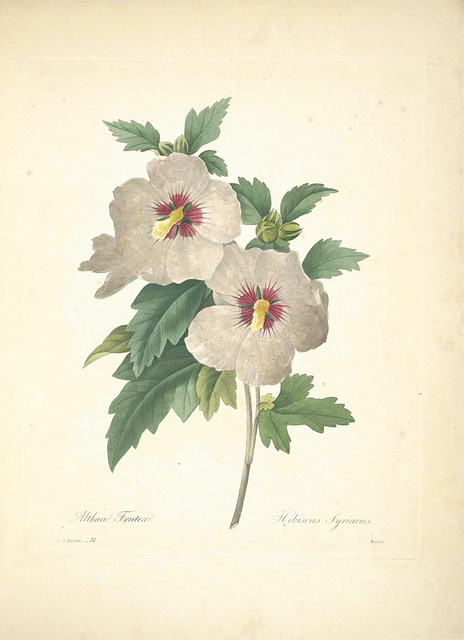
Hibiscus syriacus – botanical illustration.
This bush, with a very exotic appearance, has a very harmonious and upright habit, reaching 1.50 to 3 m in height and 1.20 to 2.50 m in spread. Its alternate leaves, ovate to lanceolate and more or less lobed with dentate and undulate edges, are evergreen in warm climates, but deciduous in our climates: they turn yellow from October, disappearing completely in winter. Easy to grow, it settles easily in our gardens, in cool soil and under bright exposure.
Native to China, where it grows at altitudes between 500 and 1,000 m, theHibiscus paramutabilis is also a very hardy hibiscus. Less known than its cousin H. syriacus, it possesses the same qualities and low cultivation requirements. It is distinguished by larger flowers, ranging from white to pink, which emerge from a magnificent red heart. A spectacle enhanced by large palmate leaves, measuring 15 cm in all directions, composed of 7 lobes with dentate edges. Light green in colour, they are covered with a slight down, like almost all parts of the plant.
H. syriacus or H. paramutabilis both thrive in borders, as well as when grown alone, and can also be cultivated in pots to enhance a terrace. Very hardy, these hibiscuses can withstand temperatures down to -15°C in cool, but not overly moist soil, and require winter protection only in regions with the harshest winters, particularly in high mountains. Elsewhere, they thrive easily, surviving winter without issue to reappear in spring, sometimes a bit late (it can take until May, so don’t despair!). Another advantage: they require no maintenance, apart from a recommended pruning to maintain a bushy habit and encourage generous flowering.
Swamp hibiscuses, a little more tender, can also be cultivated in all our regions. These herbaceous plants with a woody stump are native to the marshy areas of the southern United States and have retained a preference for long, hot summers from this origin. They thrive in the sun, in any waterlogged soil in summer, but require the soil to dry out a bit to withstand the harshest frosts. Winter protection may even be useful in the coldest regions (continental or montane climate). Swamp hibiscuses are particularly stunning by a water feature or on a terrace in a large pot kept very moist. They also find their place in damp borders, accompanied by other plants from wet environments like Gunneras or cannas. In spring, they may take their time to appear, but then ensure a display throughout the summer until autumn.
TheHibiscus moscheutos, also known as Hibiscus palustris, is the most well-known species of swamp hibiscus. In France, this swamp ketmie forms a beautiful bush with upright stems, about 1.50 m high. The numerous cultivars offer a beautiful variety of colours, such as the large and magnificent blood-red flowers measuring 25 cm in diameter of the Hibiscus moscheutos ‘Rouge’.
 Various forms and colours: Hibiscus syriacus ‘French Cabaret Purple’, Hibiscus syriacus ‘Starbust Chiffon’, Hibiscus syriacus ‘French Cabaret Pastel’, Hibiscus coccineus, Hibiscus syriacus ‘Eleonore’.
Various forms and colours: Hibiscus syriacus ‘French Cabaret Purple’, Hibiscus syriacus ‘Starbust Chiffon’, Hibiscus syriacus ‘French Cabaret Pastel’, Hibiscus coccineus, Hibiscus syriacus ‘Eleonore’.
The Hibiscus coccineus (synonym Hibiscus semilobatus) also features particularly remarkable flowering. Its large, very graphic flowers, measuring 15 to 20 cm in diameter, consist of 5 bright red petals that articulate around a magnificent central red column. A very exotic aesthetic complemented by finely dissected deciduous foliage, reminiscent of hemp or Japanese maple.
Not very demanding, swamp hibiscuses require an environment that meets two conditions: summer warmth and soil moisture. As quintessential pond plants, they will be most lush in waterlogged soil, regardless of its nature.
 Various forms of foliage: Hibiscus moscheutos ‘Planet Griotte Tangri’, Hibiscus syriacus, Hibiscus coccineus, Hibiscus moscheutos ‘Rose’.
Various forms of foliage: Hibiscus moscheutos ‘Planet Griotte Tangri’, Hibiscus syriacus, Hibiscus coccineus, Hibiscus moscheutos ‘Rose’.
The numerous species and varieties of hardy hibiscus allow for very varied associations and find their place in all types of gardens, from the most contemporary to the English garden. Very floriferous, these shrubs are also valuable allies for the biodiversity of our gardens, even in urban areas, thanks to their ability to attract butterflies and other pollinating insects.
Species and varieties
The genus Hibiscus consists of several species that are primarily distinguished by their varying degrees of hardiness, as well as by different growing conditions.
Among the hardiest, we find:
- Hibiscus syriacus, also known as Tree Mallow, Althea or Garden Ketmia, the most popular species in France as it adapts to all our climates. It thrives easily in any ordinary soil that remains moist in summer.
- Hibiscus paramutabilis, less well-known, has the same hardiness and requires the same growing conditions.
The marsh hibiscuses, H. moscheutos and H. coccineus, which are a bit more sensitive and much later in growth than the hardy varieties, also grow very well in our latitudes in any waterlogged soil during summer.
There is an impressive number of varieties mainly derived from the species H. syriacus and H. moscheutos. These varieties are particularly distinguished by the size and colour of their flowering.
The hardiest varieties
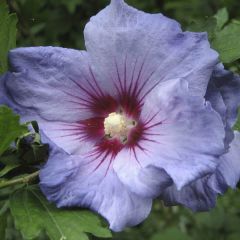
Hibiscus syriacus Oiseau Bleu - Rose of Sharon
- Flowering time August to November
- Height at maturity 3 m
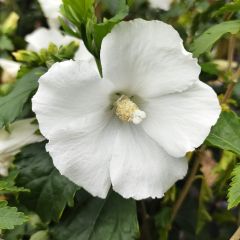
Hibiscus syriacus Eléonore - Rose of Sharon
- Flowering time August to November
- Height at maturity 2 m
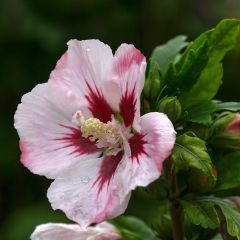
Hibiscus syriacus Hamabo - Rose of Sharon
- Flowering time August to November
- Height at maturity 2,25 m
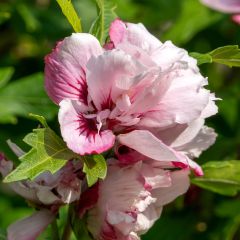
Hibiscus syriacus Lady Stanley - Rose of Sharon
- Flowering time August to October
- Height at maturity 2 m
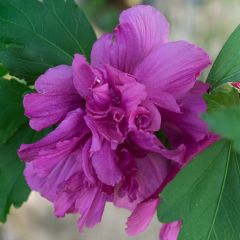
Hibiscus syriacus Freedom - Rose of Sharon
- Flowering time August to November
- Height at maturity 2 m
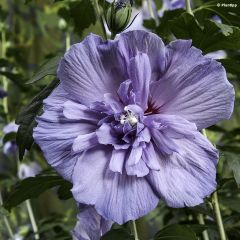
Hibiscus syriacus Blue Chiffon - Rose of Sharon
- Flowering time August to October
- Height at maturity 1,70 m
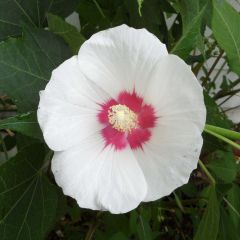
Hibiscus paramutabilis
- Flowering time August to November
- Height at maturity 2,50 m
The more sensitive varieties
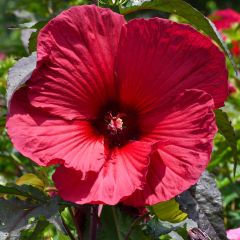
Hibiscus moscheutos Red - Swamp Rose Mallow
- Flowering time August to November
- Height at maturity 1,50 m
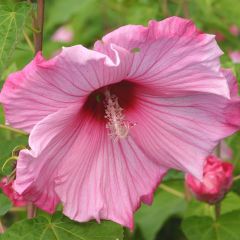
Hibiscus moscheutos Sweet Caroline - Swamp Rose Mallow
- Flowering time August to October
- Height at maturity 1,50 m
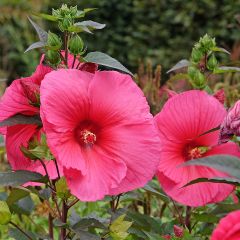
Hibiscus moscheutos Planet Griotte - Swamp Rose Mallow
- Flowering time August to October
- Height at maturity 1,70 m
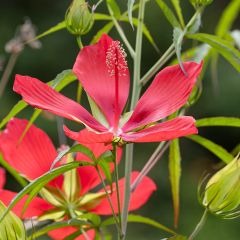
Hibiscus coccineus
- Flowering time August to October
- Height at maturity 1,75 m
Discover other Hibiscus
View all →Available in 0 sizes
Available in 1 sizes
Available in 1 sizes
Available in 1 sizes
Available in 0 sizes
Available in 2 sizes
Available in 1 sizes
Available in 1 sizes
Available in 2 sizes
Available in 1 sizes
Planting hibiscus
Where to plant?
All hibiscus enjoy sunny locations, which guarantee beautiful and long-lasting flowering. In southern regions with scorching summers, they can tolerate light shade.
Like its cousin H. paramutabilis, Hibiscus syriacus, or althea, is very hardy and can be grown in open ground in all our regions. In areas subjected to the coldest winters, such as mountainous regions, it is better to grow it in a pot, which also works very well.
Plant your hibiscus in rich, organic, and light soil. Clay-loamy soils are preferred, although it will also thrive in any ordinary soil, even calcareous. The important thing is that this soil remains cool but well-drained, even in the height of summer. It can withstand occasional drought, but at the expense of its flowering.
Somewhat less hardy, the marsh hibiscus (H. moscheutos and coccineus) prefer climates with long, hot summers and mild winters. Their cultivation in open ground is ideal in Mediterranean, oceanic, or even semi-oceanic climates. However, in eastern France and at altitude, it is better to plant in pots or provide winter protection.
The only other condition for obtaining a lush marsh hibiscus is to place it in moist, even waterlogged soil in summer. These species thrive by the edge of ponds. They prefer rich soils, even heavy and clayey, and can tolerate calcareous conditions.
Finally, remember to position your hibiscus, whatever it may be, sheltered from strong winds to protect its delicate flowering.
→ Learn more in What is the best place to plant a hibiscus?
When to plant?
Hardy varieties (H. syriacus and paramutabilis) can be planted in spring or autumn, particularly in March or October.
Prefer spring planting for marsh hibiscus, from March to April, and until June in the colder regions such as eastern France or the Massif Central.
In any case, wait until all risk of frost has passed.
How to plant?
Hibiscus is very easy to plant:
- Dig a hole at least 3 times the size of the root ball.
- Loosen the soil well and mix it with potting soil or well-decomposed compost.
- Place your hibiscus in the centre of the hole and fill in with your mixture.
- Water generously and mulch if your soil tends to dry out quickly.
Remember to improve drainage for hardy altheas (H. syriacus) by installing a layer of gravel at the bottom of the hole. Maintain a planting distance of 50 cm in all directions (1 plant per m²).
For marsh hibiscus, which require very moist soil, our tip is to line the planting hole with a waterproof film. The planting density is 3 plants per m².
In pots, use the same substrate as in open ground. Drain the bottom of the container with clay balls for the syriacus and paramutabilis species.
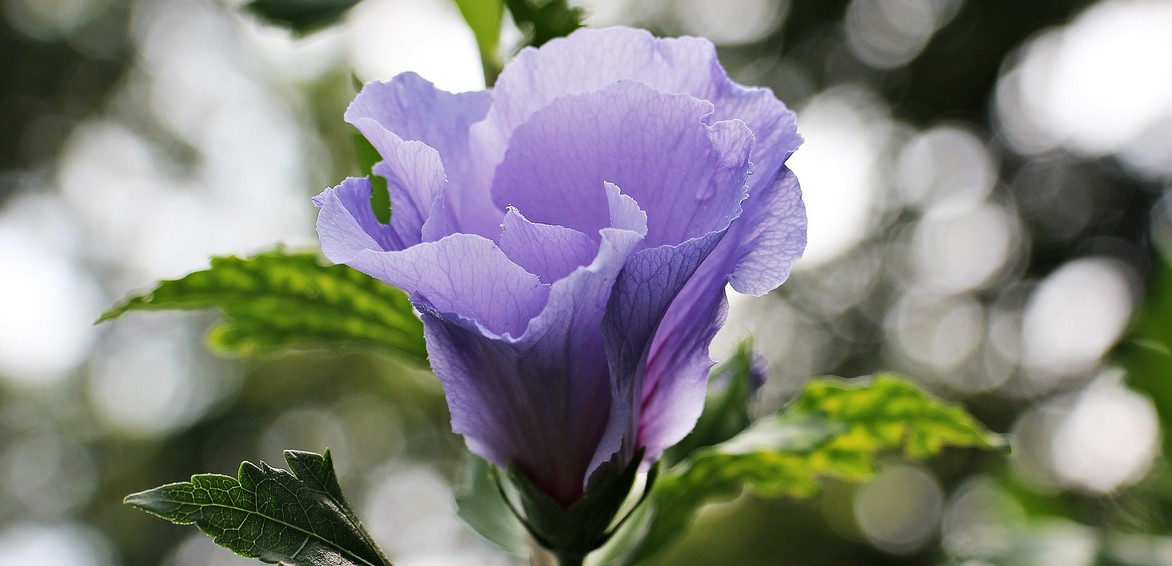
Hibiscus flower in bloom
Growing and care
Under good growing conditions, althaeas such as marsh hibiscus are very easy to grow and are not prone to diseases. While they generally survive winter well, they may take some time to re-emerge in spring. It is not uncommon to have to wait until May to see them reappear, so be patient!
Hardy Hibiscus or Althaeas
The Hibiscus paramutabilis require the same growing conditions as Hibiscus syriacus.
While they can tolerate drought, at the expense of a beautiful flowering, these hibiscus prefer to have their roots kept cool. Water them regularly and mulch to retain moisture and reduce watering in summer. Potted plants need to be monitored even more closely, as their substrate dries out quickly.
In autumn, stop watering. Even though hardy hibiscus can withstand cold down to -15°C, they cope better with frost in drier soil. However, mulching is not necessary, especially if your autumns are very wet, as a waterlogged mulch can harm the hardiness of your hibiscus. Also, be careful not to leave your potted plant in a location too exposed to winds or rain.
At the end of winter, severe pruning is recommended to encourage a more abundant future flowering.
For cultivation in pots or in ordinary poor soil, adding compost in early spring also ensures a good recovery. This recovery may indeed take until May for these woody hibiscus! Patience is rewarded later with rapid growth and beautiful flowering until September or October.
Marsh Hibiscus
The species Hibiscus moscheutos and coccineus are lush marsh plants that require significant and constant soil moisture throughout the growing and flowering period (from May to around October). Potted plants will benefit from being placed in large saucers continuously filled with water during this time.
When autumn arrives and the leaves turn yellow, simply maintain the soil moisture, but do not let it become waterlogged. Be sure to empty the saucers of potted hibiscus.
In mild climates (particularly coastal areas), winter protection is not necessary, and a severe cut back to 5 cm above the ground can be done as early as late autumn. In regions north of the Loire and mountainous areas, marsh hibiscus must be protected from frost. Apply a mulch 10 cm thick to protect the stump in early November. Wait until the end of winter to cut back the stems, as the aerial parts provide additional protection to the stump.
In these regions, planting in pots is also a good solution to winter your hibiscus away from frost. A frost-free location, even if dark, will suit it, as the plant will be in a resting period. Water occasionally to keep the soil moist.
→ Discover our guide on growing Hibiscus in pots, Sophie’s tutorial: When and how to prune Hibiscus or Althaea? and Forming a Hibiscus into a tree
Pruning of hibiscus
The flowering of hibiscus occurs on new shoots. Pruning at the end of winter, although not essential, accelerates their growth and ensures spectacular flowering.
For hardy hibiscus (H. syriacus and paramutabilis), carry out severe pruning in February/March by cutting the main branches by at least half their length and retaining only three to five buds on the lateral branches. Always cut above an eye facing outward.
Marsh hibiscus, on the other hand, will benefit from being cut back severely. Cut the stems to 5 cm above the soil at the end of autumn, or in late winter in regions with very harsh winters.
Multiplication: by cuttings, division or sowing
Hibiscus is generally propagated by cuttings or division. Sowing is possible but yields more unpredictable results, not always conforming to the characteristics of the parent plant, and it may take up to 5 years before the first flowering.
Cutting Hibiscus
The cutting of hibiscus allows you to retain all the characteristics of the original plant. It is usually done in late spring to early summer (June-July) on current year’s shoots.
- Choose vigorous, healthy, and straight shoots.
- Cut the tips of the shoots to 10 to 15 cm. They should not have any buds.
- Keep a part of the supporting branch of 2 or 3 cm on either side of the base (these are called cuttings in crozier).
- Cut the leaves to two-thirds of the height from the base.
- Optionally cover the crozier with rooting hormones.
- Plant each cutting in a bucket filled with equal parts of turf, sand, and potting soil.
- Moisten the substrate and place the cuttings in a humid environment by covering the buckets with transparent plastic, for example.
- Keep the buckets under a frame throughout the winter, maintaining the substrate moist.
In spring, plant your cuttings in a sheltered corner of the garden and grow them for 2 years, allowing them to strengthen, before transplanting them to their final location, especially if it is in full sun.
→ Learn more in our tutorial: How to propagate Marsh Hibiscus by cuttings?
Division
This method is recommended for Marsh Hibiscus. If your hibiscus produces suckers, it is possible to try to recover the sucker for replanting. Wait until spring to proceed:
- Clear the soil around the sucker, which should be at least one year old.
- Detach the sucker from the parent plant.
- Replant immediately and water abundantly.
Sowing Hibiscus
After flowering, hibiscus is covered with small capsule-shaped fruits. Collect the seeds in autumn when the capsules begin to open. To allow the seed to germinate, stratification is necessary:
- Place the seeds in successive layers in a terracotta pot filled with seed compost.
- Improve drainage with a layer of clay balls at the bottom of the pot.
- Place the pot outside in a location where it will benefit slightly from seasonal rains, without becoming waterlogged.
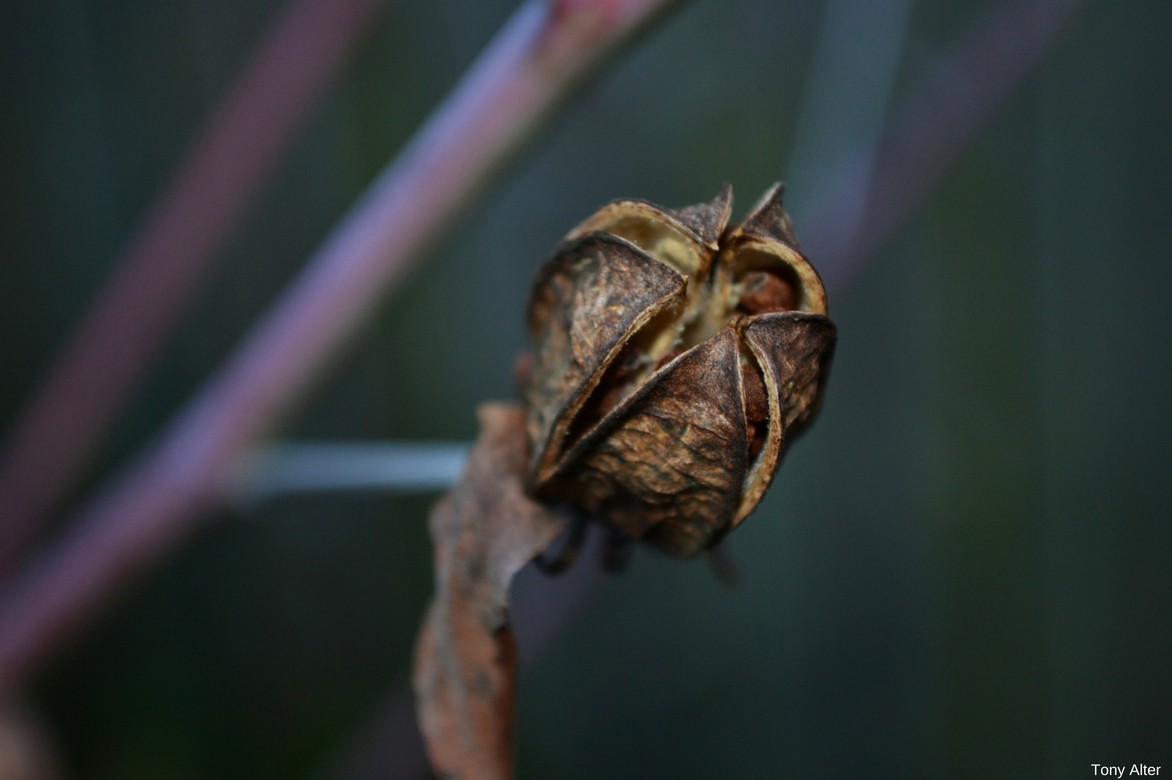
Seed capsule of a Hibiscus.
In the following spring:
- Place the seeds in individual buckets filled with seed compost.
- Place your buckets in a warm and bright location.
- Keep well moist until germination.
- Then wait for the compost to dry before watering.
Planting in the ground takes place in autumn.
Associating hibiscus in the garden
Grown upright or on a stem, Hibiscus syriacus looks stunning when planted alone in the middle of a short grass meadow. In regions with very harsh winters, plant it in a pot so you can bring it indoors when winter arrives. It can then also enhance a terrace or a large balcony. The species H. paramutabilis, with its white flowering and red centre, will also be very striking.
The Hibiscus syriacus or althea can also be used to create a medium-height hedge. Mix varieties with different colours or pair it with other flowering bushes such as buddleia or abelia.

An example of a hedge pairing: Hibiscus syriacus ‘Pink Chiffon’, Buddleia davidii, Abelia grandiflora.
For a colourful, slightly wild look, place your Hibiscus syriacus at the back of a flowerbed and pair it with perennials that have a country-style appearance, such as sedums, gauras, phlox, or asters.
Marsh hibiscus is perfect for adding an exotic touch to the edge of a bank or pond. For example, plant a Hibiscus moscheutos ‘Rose’ alongside a Gunnera, cannas, an Ethiopian arum, Rodgersia ‘Chocolate Wings’, or a Colocasia esculenta. These combinations will also look wonderful in a damp flowerbed.
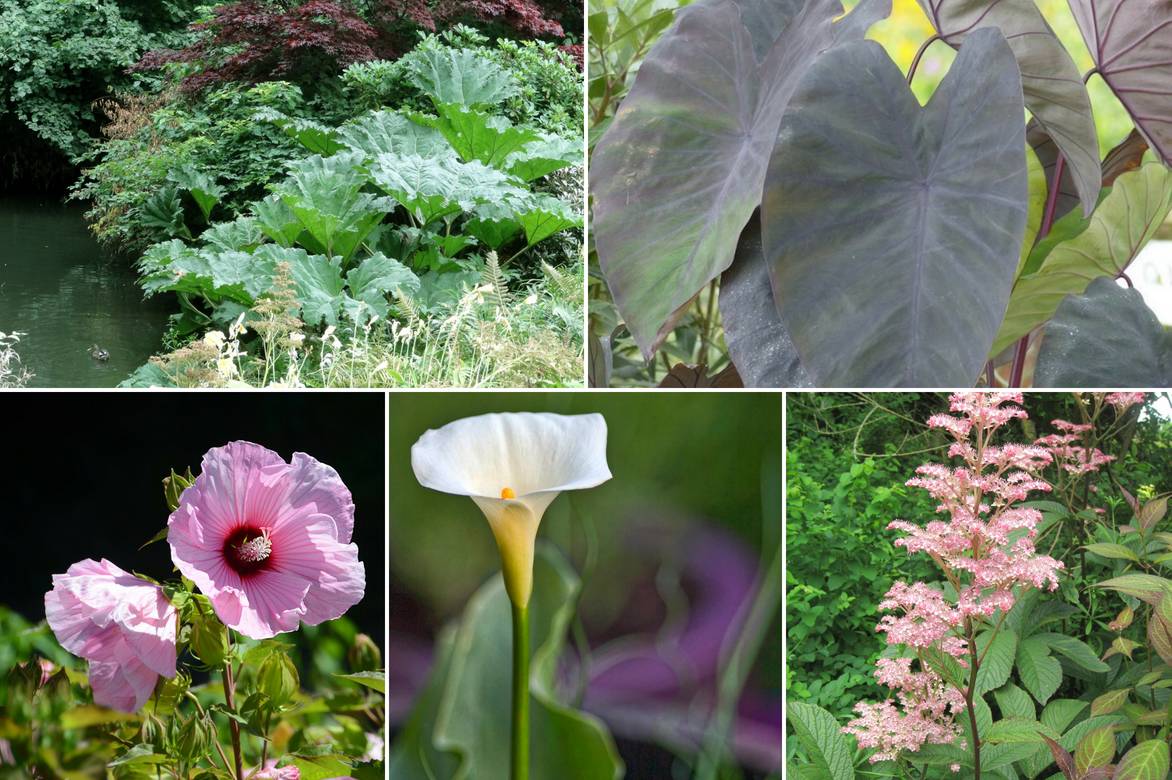
An idea for pairing in a wet environment: Gunnera manicata, Colocasia ‘Black Magic’, Zantedeschia aethiopica, Rodgersia pinnata ‘Chocolate Wings’, Hibiscus moscheutos ‘Planet Solène’.
Also take advantage of this lush plant to give a tropical style to your terrace by planting, for example, a Hibiscus coccineus in a large pot kept very moist from spring until early autumn.
Useful resources
- Discover our wide range of hardy Hibiscus!
- Check out our tutorial to learn how to train a hibiscus into a tree
- Also read this article by Pascal to learn all about protecting your plants in winter.
- Discover other remarkable flowering bushes that you can pair with Hibiscus: 10 summer-flowering bushes you must have in your garden!
- Learn more about growing Hibiscus in pots
- Check out our blog article: Herbaceous Hibiscus
- Must read: Double-flowered Hibiscus, the most beautiful varieties; 5 red-flowered Hibiscus; 5 hibiscus with mauve or blue flowers; 5 white-flowered Hibiscus; 5 pink-flowered hibiscus
Frequently asked questions
-
Spring is well underway, and my hardy hibiscus shows no signs of recovery. Is there any hope?
No need to panic, hibiscus has a very late bud burst period and requires plenty of warmth and sunlight to grow, so it is not uncommon to wait until May, or even longer at times, to see its first leaves! Just be patient a little longer; a hardy hibiscus withstands our cold winters very well, and despite the colour of its wood, if it has been planted in good conditions and showed no signs of weakness last year, it has a 99% chance of coming back!
-
I live in the Jura where winters are often harsh; will the hibiscus still thrive here?
You can definitely treat yourself to a touch of exoticism, even in your mountainous region! Choose a Hibiscus syriacus, which can withstand frosts down to -15°C in cool but not waterlogged soil. And if you are really concerned about its survival, plant it in a pot where it will thrive, and place it in a frost-free room as soon as the first cold weather arrives.
- Subscribe!
- Contents
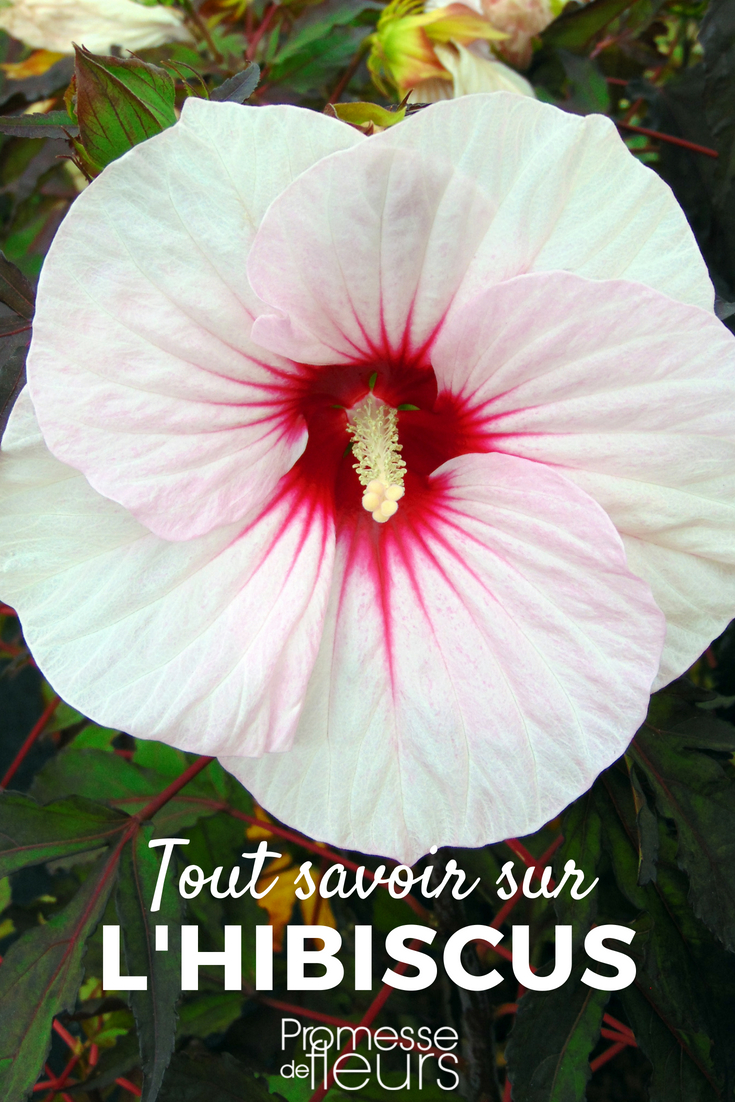































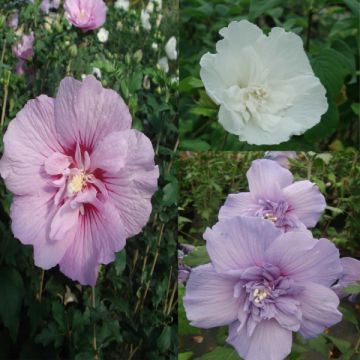
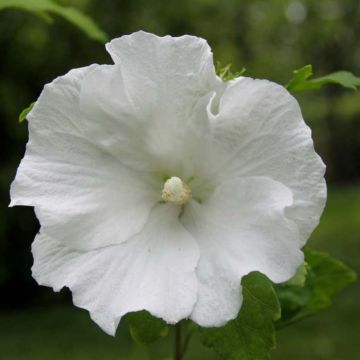
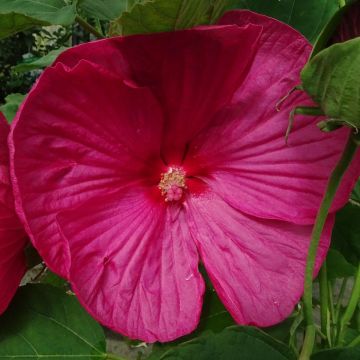
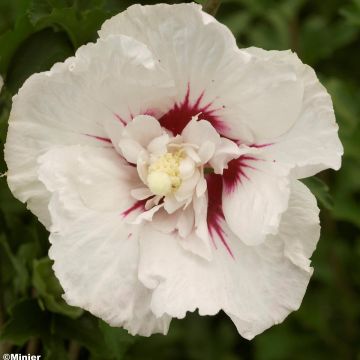
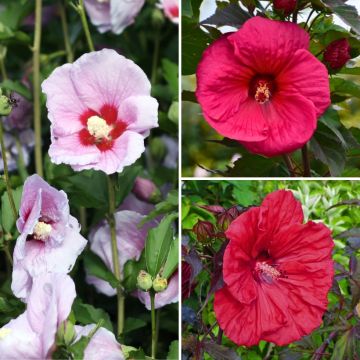
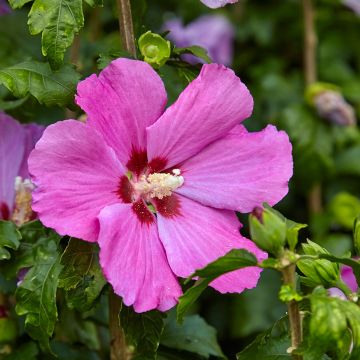
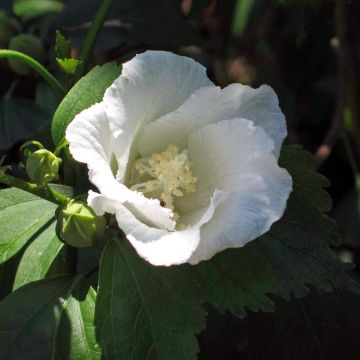
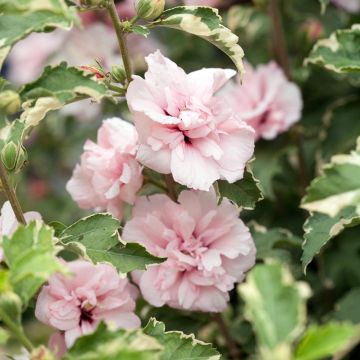
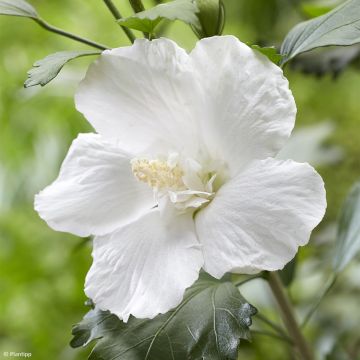

Comments